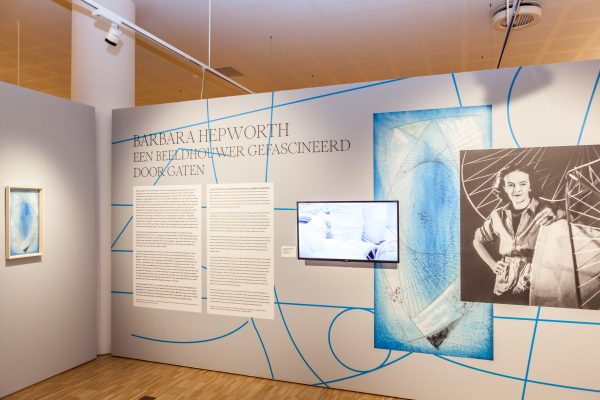
- 15 September 2020
- 23 March 2021
- Kasteel Helmond
Abstract!
Ecole de Paris, Cobra & Hepworth
Vivid colours, intuitive brushstrokes, figurative abstraction, and freedom in terms of form are hallmarks of these works. All are wholly products of the ‘École de Paris’ (School of Paris) and COBRA, two largely abstract movements that emerged around the middle of the twentieth century.
Lyrical art
Artists in this movement produced lyrical, boldly coloured art and were free in terms of the forms they used, favouring abstraction and drawing their inspiration from the visual dimension of nature. Nature’s greenery also inspired most of the abstraction produced by the COBRA-affiliated artists, a movement that originated almost simultaneously in the Netherlands, Belgium, and Denmark. Experiencing a similar freedom in their use of colour and form, the COBRA artists’ work was spontaneous and childlike or resembled the artistic expressions of the mentally ill.

Barbara Hepworth
An important work in the exhibition is ‘Orpheus (Scale Model 2) [Version i]’ from 1956 by Barbara Hepworth (1903-1975), one of the major British sculptors of the last century. The sculpture references Orpheus, the poet and musician from Greek mythology who used his lyre to tame animals and nature. This fragile work of art underwent major conservation work in 2010 and can now be seen again in its full glory.

Artists
The works of art in the exhibition belong to the Roef-Meelker art collection, named after the late Pieter Roef sr. who donated the works in 2001, and are on show every three years. The exhibition includes works by Barbara Hepworth, Karel Appel, Asger Jorn, André Masson, Pierre Alechinsky, Corneille, Constant, Lucebert, Alfred Manessier, Roger Bissière, Nicolaas de Stael, Geer and Bram van Velde, Theo Wolvekamp, and Jaap Wagemaker.
The exhibition was put together with the support of the Rembrandt Association and the Turing Foundation.




